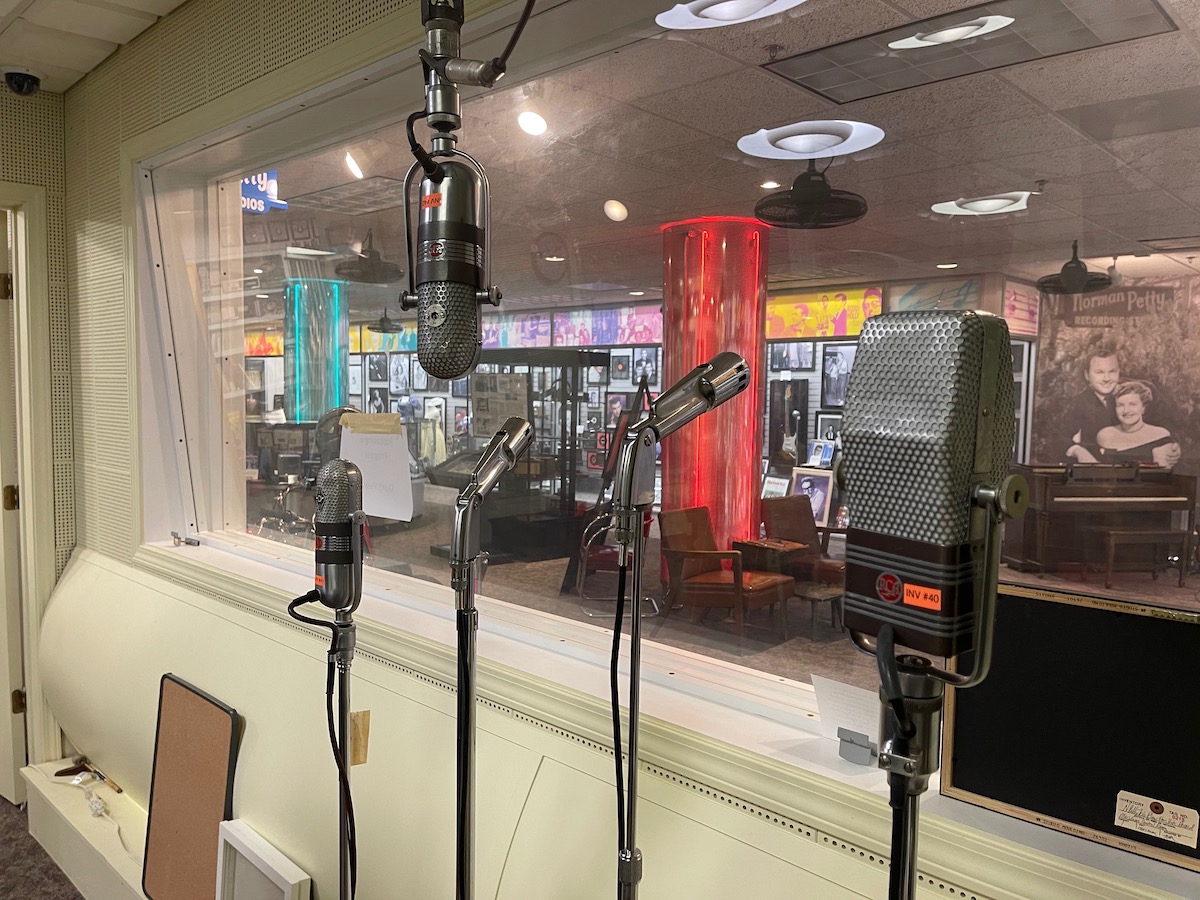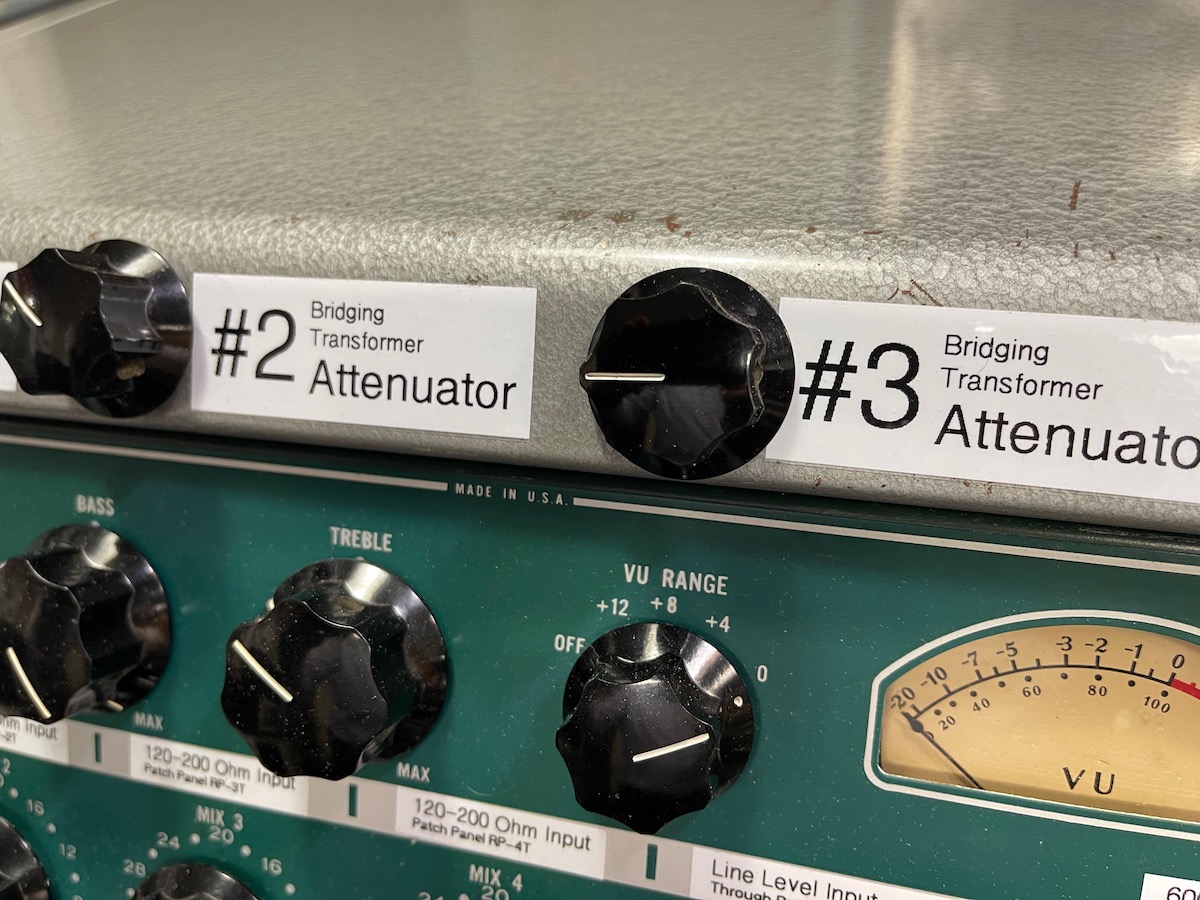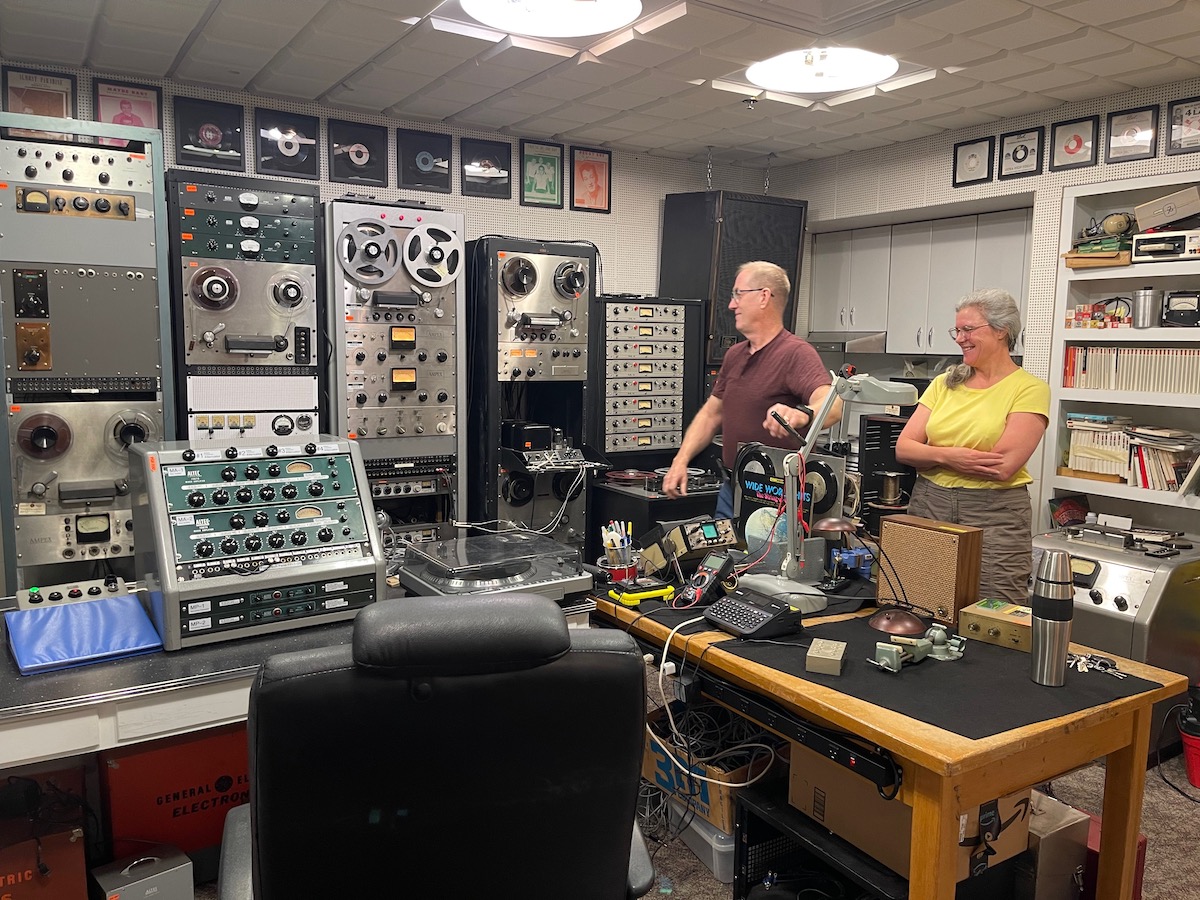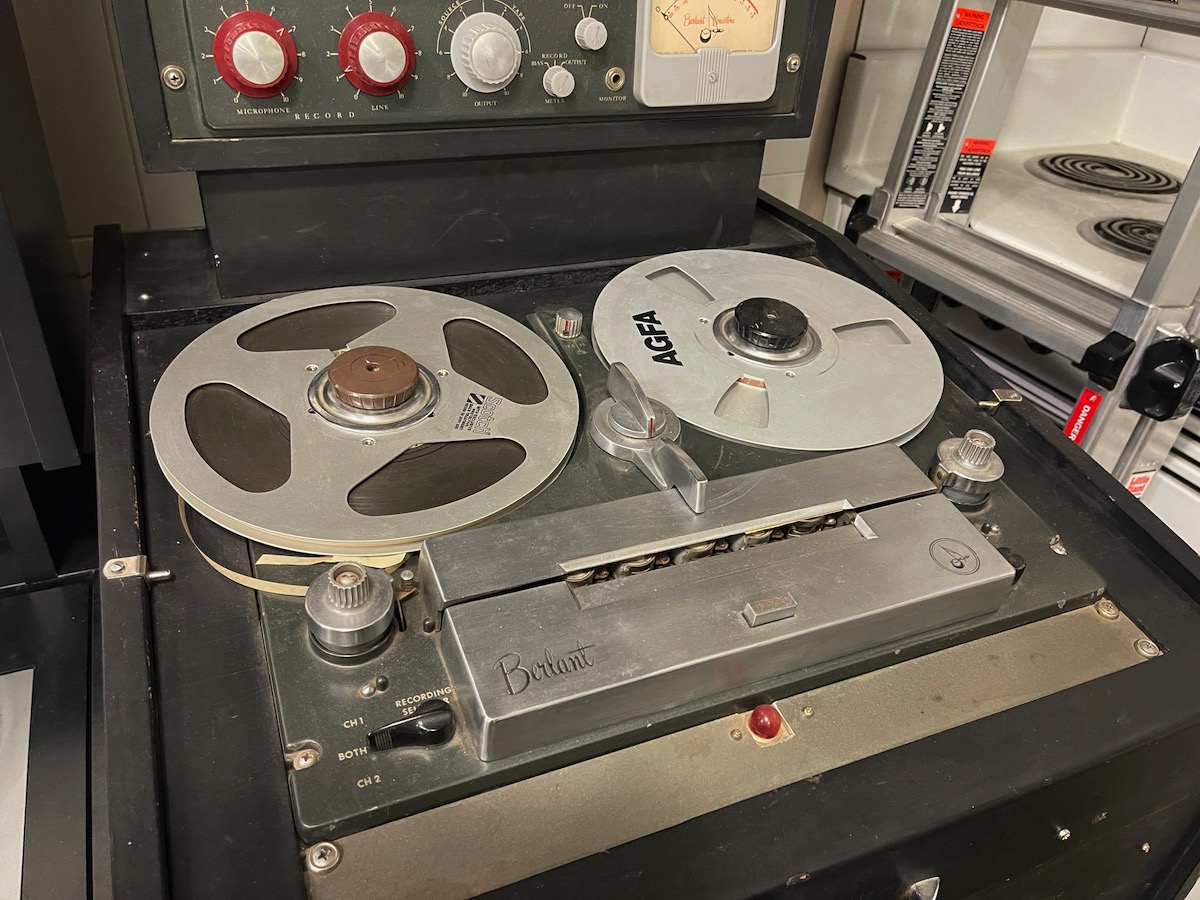“One day at a time,
One wire at a time,
One tested circuit at a time”
-Jay Fisher
Jay Fisher has led the charge in the creation and ongoing operation of the Clovis Sounds Studio, located in the Norman and Vi Petty Rock N’ Roll Museum in Clovis, New Mexico.
The studio has famous origins; much of the equipment dates to before Buddy Holly famously recorded in Clovis and exploded into fame.
In addition to restoring the studio to which his family has a personal connection, he also spends his time as an entrepreneurial artisan knife maker at Jay Fisher Fine Custom Knives. His wife, Amy, is an ordained minister.
“We don’t know that Buddy Holly used any specific piece of equipment here,” Jay Fisher said as he opened the studio door and went inside, gesturing towards the equipment, “but it’s safe to say he used some of it. Most of what you see is the equipment that was here when he was.”
The Clovis Sounds Studio started as an exhibition of vintage analog recording equipment from the 1930s through the 1960s. “There might be a few pieces from the seventies,” Fisher said with a mock grimace, “but there’s only a few, and we don’t talk about that,” he said with a laugh.
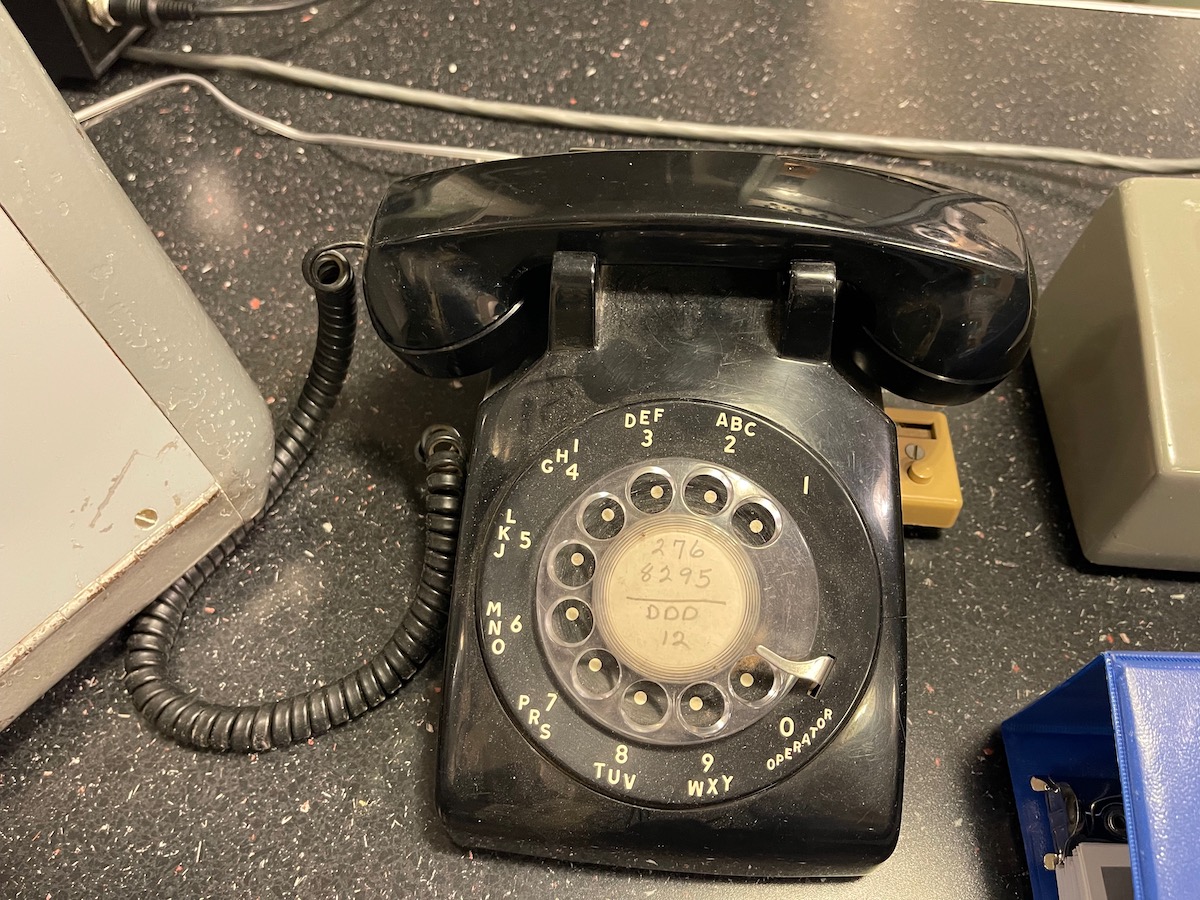
Everything is vintage, including, “The Ghost Phone”
Fast forward to today, and the equipment is being restored to full working order with an eventual goal of making it available to musicians.
“Analog is the most pure sound there is,” Fisher said. “As word has started to get out about what we’re doing, we’ve started fielding calls from everywhere. There’s only a handful of analog studios in the country, and ours happens to be famous!”
History
When Fisher calls the studio, “famous,” he is referring to the history of the Norman Petty Recording Studios being the place music legend Buddy Holly got started, and saw many famous musicians record there over the years.
As time went on, much of the equipment ended up being owned by Jay Fisher’s dad, who was a close family friend of the Pettys and worked with Norman. Fisher grew up in an environment where there two families were close.
Fisher’s dad was the mechanical genius that made everything work, and Norman Petty referred to him as, “his Kid Wonder,” because he could, “fix anything, and make anything work,” Fisher said with pride.
The story of how the Clovis Chamber of Commerce came to own all the pristine analog recording equipment is a fascinating one, and is told in detail on the Clovis Connections podcast, which is hosted by Amy Fisher asking her husband Jay questions about the history, and plans moving forward.
Status and Future Plans
The “Clovis Sounds Studio” is located in the museum. It has large windows, allowing people to look in at the pristine recording gear that is being brought back to life by Fisher.
“Musicians and audiophiles know how special our work here is, which is why we’re getting so much interest. Plus we have the safe,” Fisher said with a sly grin.
The safe Fisher referred to is also located in the museum, is temperature controlled, and contains extremely valuable recordings. “I’m going to get a recording from the safe,” Fisher said, “and I’m going to play an original recording Buddy Holly made here, live, with this equipment.”
Fisher left the room and returned with a reel to reel recording and played it. “Do you hear that?” FIsher asked as the music played, “it sounds like Buddy Holly is standing here next to us, singing.”
Fisher said the work restoring the equipment is slow but steady as he opined, “one day at a time, one wire at a time, one tested circuit at a time.”
The goal is to have a fully functioning analog studio complete with stand alone echo and reverb rooms. “People can’t believe what we’re doing when they hear about it,” Fisher said. “Nobody,” he paused, and then added emphasis to the word, “Nobody is dedicating physical space for echo and reverb rooms. Nowadays it’s all run through digital workstations but, again, nothing can compete with the real thing, and musicians want to use the real thing. This is an exciting time.”
The studio is not yet available for public use by musicians, but they are hoping to have everything done in 2023.
“This was just a museum exhibition,” Fisher said, “but now it’s turning back into what it was made for, and the public can watch it happen.”
At the present time, Jay and Amy Fisher record the Clovis Connections podcast in a room adjacent to the recording gear. “We’re currently the only ones recording a podcast here,” Amy Fisher says on the podcast, “but we hope that will change in the future.”
The Fishers told me the podcasting side of the studio is being finished now and will be made available for public use by podcasters.
“It’s so exciting to bring this equipment back to life and witness the enthusiasm building around it,” Jay Fisher said. “We’re doing something special here in Clovis. This equipment is highly sought after and valuable. We’ve had so many offers to purchase it, but it was important that the Chamber of Commerce got it, and is making it live again, available to the community.”
The Clovis Sound Studio is located in the Norman and Vi Petty Rock N’ Roll Museum in Clovis, New Mexico, underneath the Chamber of Commerce, located at 105 E. Grand Avenue.

